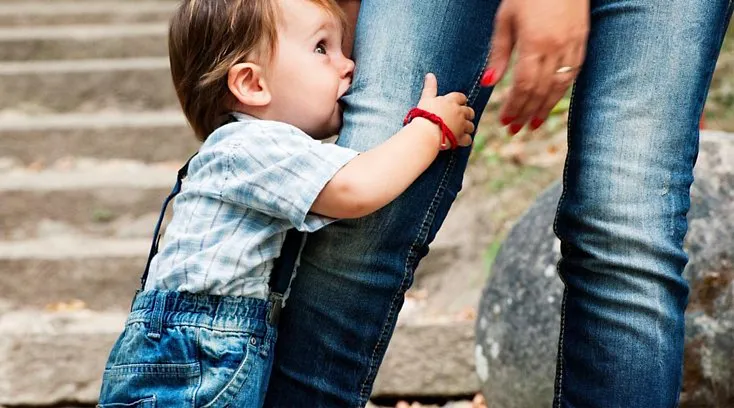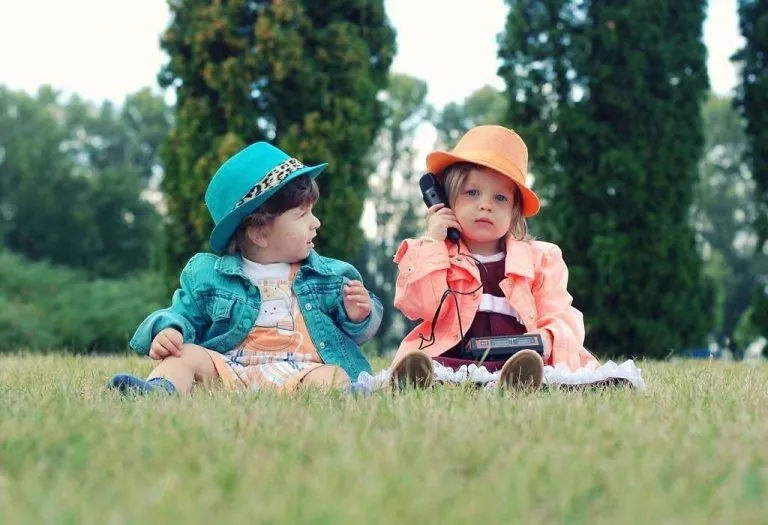12 Common Toddler Behaviour Problems and Their Solutions

Expect your toddler to show various behavior issues during the terrible twos and threes and even later. Though this is a normal part of growing up, ignoring it may lead to such behavior becoming a habit for life. The good news, however, is that this behavior is temporary and will reduce and eventually disappear with age. As a parent, you can manage such behavioral issues in toddlers by applying some simple and easy-to-follow solutions, such as setting clear boundaries, using positive reinforcement, and maintaining a consistent routine to provide a sense of security and stability.
Behavioural Problems in Toddlers and Ways to Handle Them
Terrible twos have been well-documented over the years. This is an especially tough time for a toddler and his parents. At this age, children understand and feel more than they are able to put into words. And, hence, they may feel emotionally overwhelmed, which results in acting out, screaming, temper tantrums etc. The common behavioural expressions of feeling emotionally overwhelmed looks can look like this:
1. Screaming
Your tiny tot is a bundle of energy right now and he has probably just found out that he can shout and scream too. Also, since every time he does this, you come running from wherever you are and give him attention. For a child, screaming does not imply angry behaviour as he is yet to know that screaming isn’t a good thing.
How to Handle It
The situation could get worse if you scream back at your baby as he may feel that it’s ok to shout. You could teach him the difference between a loud and soft voice. Shout in a loud voice and ask him to do so. Then lower your voice and ask him to repeat. So, the next time the child screams, ask him to use his soft voice instead. Make sure you use a soft voice yourself while doing this.
2. Kicking and Biting
At age two or three, your otherwise angelic toddler may be showing signs of aggression by biting and kicking all those in the range. He may be doing so to get attract your attention. The key is not to respond to him every single time he does it as this could then turn into a habit. However, like other similar habits, this one too will fade away with time.
How to Handle It
If your child regular indulges in these aggressive actions, make sure he knows that these actions could invite certain consequences. Instead of shouting when he kicks or bites people around, assign a ‘naughty’ chair in the house and make him sit there until he cools off.

Source: Pinterest
3. Temper Tantrums
Between the ages of one to three, your tiny tot is being exposed to a wide range of emotions. He may not be able to express himself properly, although he can understand all that you say. This can be frustrating for the child and leads to temper tantrums. Crying out loud, screaming and throwing things around are the common form of tantrums at such times.
How to Handle It
There is a pretty simple way of dealing with toddler behaviour of this kind and that is to remain calm yourself. If you too shout and throw a fit, things could worsen. Do not raise your voice or force your child to keep quiet. Get down to the child’s eye level and hold his hand. Picking him and embracing him can calm the toddler as he gets comfortable in your arms. Reiterate that you love him and all will be well. And if nothing works, let your child wear out the tantrum and then explain things calmly to him.
4. Saying No
Your young child has probably made a recent discovery about the consequence of saying the word “No”. Since he has often heard this word from you, he makes every attempt to use it while responding to you. Not only does this word draw a reaction from you but it also provides an alternative to your toddler.
How to Handle It
While managing toddler behaviour issues you should remember at all times that it’s your baby that the younger one. By reacting in a loud voice, you could damage an already fragile situation. Become an example for your baby by keeping calm so he can do so too. This is his way of getting your attention or channelising excess energy.
5. Interrupting
Your child’s short-term memory hasn’t quite developed yet, which means that he will want to say things before he forgets them. This can seem as interrupting, though it does not make any sense to the toddler. At this age, he is unable to understand that you have to manage and respond to various other people and situations. But he will understand this concept after 4 years of age or so.
How to Handle It
In such a situation it is best to reduce situations where the child can interrupt you, and divert his attention when he does so. Schedule time with friends at places where you can chat and your toddler can play, either with other kids or with toys or games. Practice this behaviour with your spouse in front of your child.
6. Lying
Your child may not be able to differentiate between reality and fantasy until he reaches the age of 3 or 4 years. The concept of lying is still unknown to him, nor does he understand what truth means. He has an active imagination at this age and he will create imaginary creatures and people, deny drawing on the wall or spilling the milk.
How to Handle It
Accusing your child of doing a particular act will not help. Instead, create a situation or encourage a dialogue so he finds it easy to confess instead of denying. If you overburden your child with a long list of do’s and don’ts he may get overwhelmed and could be forced to lie. Create an environment of trust and tell him you trust him and so should he.

Source: Pinterest
7. Hair Pulling
Similar to kicking and biting, hair pulling too is a way of expressing his or her feelings and creating a controlled environment around himself. Kids are keen to get a reaction from their parents or siblings and hair pulling surely get them one. He could be pulling other’s hair to enjoy himself since he loves the reaction or it could also be an impulsive control disorder if he is pulling his own hair.
How to Handle It
Demonstrate to him that hair pulling does not work and will get him nowhere. Stop the behaviour whenever you see it and explain it isn’t working for him nor others. Talk to him about this behaviour when he isn’t doing it. Tell him this act does not alter the other person’s behaviour in any way.
8. Whining
Imagine this. Your child is dependent on you for all the important things in his life which include eating, drinking, support and even getting cleaned after he poops. If he wants to get your attention, he resorts to crying or whining. He feels that this way his mother will give him all that he needs and this, then, becomes his standard behaviour.
How to Handle It
If you hear your child whining, get down to his eye level and assure him that you are listening and that you care. Respond quickly if your toddler asks in a normal voice to endorse that behaviour as the right one. Avoid as triggers like hunger and tiredness, as this is when the whining can increase.
9. Fear of Crowds
As a toddler, your child will probably become unruly and unmanageable when he is surrounded by a large group of people. This could happen at the mall, a busy railway station or a crowded party too.
How to Handle It
Your baby is not used to facing large crowds of strangers in an unfamiliar place and will want to cling to you or even force you to leave the place. Do not ignore this. Hug your toddler gently and squeeze his hand to tell him that you are there with him and he is safe. Take one step at a time and gradually expose him to the crowd and finally applaud the fact that he has faced the situation boldly (when he does so).
10. Nail Biting
This is one of the many 3 year old behavior problems. Biting of nails can become a habit with your child and he may even start doing it unconsciously and at times even without a trigger. It becomes so common for him that he may not be aware of doing it. This happens when the child is feeling bored or is stressed. Follow this guide to deal with unhygienic habits in kids.
How to Handle It
The more you scold, nag or push him to abandon the habit, you could find him persisting with it. He will outgrow this habit as soon as he becomes aware of other people watching him, but that could take time. In the meantime, find ways to reduce stress. Help him find a suitable physical activity to blow off steam. Do not nag him, especially in front of people. Instead, create a secret code between the both of you so you can remind him to stop.
11. Throwing Objects
Toddlers often throw objects as part of their natural curiosity and motor skill development. They might throw toys, food, or household items to see what happens or to get a reaction from adults. This behavior can also stem from frustration or a lack of other ways to express their emotions. While exploring their environment this way is normal, it can be dangerous if heavy or sharp objects are involved, posing a risk to themselves and others.
How to Handle It
Teach your child that throwing objects can be harmful. Provide clear, calm explanations about why throwing certain items is not acceptable. Offer alternatives, like soft toys or balls, that are safe to throw. Reinforce positive behavior by praising your child when they choose appropriate items to throw. Set consistent consequences for throwing dangerous objects, such as a brief time-out or removing the item.
12. Refusing to Share
Sharing is a difficult concept for toddlers as they are naturally possessive of their belongings. This reluctance to share often surfaces during playdates or group activities, leading to conflicts with other children. Toddlers are developing their sense of ownership and independence, which makes them protective of their toys and personal items. This behavior is a normal part of their development as they learn social skills and empathy.
How to Handle It
Encourage sharing by modeling the behavior yourself. When you share something with your child or someone else, point it out and explain why sharing is important. Praise your child when they share willingly, reinforcing positive behaviour. Use role-playing games to teach the concept of sharing in a fun way. Provide multiple similar toys to reduce conflicts and ensure each child has something to play with. Organize playdates where sharing can be practiced in a controlled environment, gradually helping your child understand and accept the importance of sharing.
FAQs
1. What to do when a toddler refuses to eat?
When a toddler refuses to eat, it can be stressful for parents. Offer a variety of healthy foods without forcing them to eat. Create a positive mealtime atmosphere and avoid using food as a reward or punishment. Establish regular meal and snack times to build a routine. Be patient and understand that toddlers’ appetites can fluctuate.
2. How to deal with toddler sleep issues?
Toddler sleep issues can range from difficulty falling asleep to frequent night wakings. Establish a consistent bedtime routine to signal that it’s time to wind down. Ensure their sleeping environment is comfortable and free of distractions. Avoid stimulating activities before bedtime and consider a soothing activity like reading a book. If night wakings occur, comfort your child without encouraging prolonged interaction.
3. How do you manage toddler tantrums in public?
Public tantrums can be embarrassing and stressful. Stay calm and try to remove your child from the overstimulating environment if possible. Speak to them in a soothing tone and acknowledge their feelings. Distract them with a toy or a game to shift their focus. Practice deep breathing exercises together and remain consistent with your response to reinforce learning.
4. Can I give in to my toddler’s demands during a tantrum?
This is a common question for parents. Giving in might seem like the quickest way to stop the tantrum, but in the long run, it can actually make things worse. When your child learns that tantrums get them what they want, they’ll be more likely to throw tantrums in the future. It’s important to be consistent and firm, even if it means the tantrum lasts a little longer.
This was all about behaviour issues in 2-year-old toddlers and beyond. Behavioural problems amongst toddlers are more likely to be solved through tact and common sense, rather than force. Support and understand your child, as these behaviours could be rising out of stress or his discovery of new and strange things around him. The earlier these problems are handled tactfully, the better, as they will not affect the child as he approaches school life and adulthood too.
References/Resources:
1. 10 Tips to Prevent Aggressive Behavior in Young Children; American Academy of Pediatrics; https://www.healthychildren.org/English/ages-stages/toddler/Pages/Aggressive-Behavior.aspx
2. How to Give a Time-Out; American Academy of Pediatrics; https://www.healthychildren.org/English/family-life/family-dynamics/communication-discipline/Pages/Time-Outs-101.aspx
3. Effective Discipline to Raise Healthy Children; American Academy of Pediatrics; https://publications.aap.org/pediatrics/article/142/6/e20183112/37452/Effective-Discipline-to-Raise-Healthy-Children
4. Temper tantrums in toddlers: How to keep the peace; Mayo Clinic; https://www.mayoclinic.org/healthy-lifestyle/infant-and-toddler-health/in-depth/tantrum/art-20047845
5. Safe Exploring for Toddlers; Nemours Kids Health; https://kidshealth.org/en/parents/exploring.html
6. Top Tips for Surviving Tantrums; American Academy of Pediatrics; https://www.healthychildren.org/English/family-life/family-dynamics/communication-discipline/Pages/Temper-Tantrums.aspx
7. Temper tantrums; NHS; https://www.nhs.uk/conditions/baby/babys-development/behaviour/temper-tantrums/
Also Read:
Helping Your Toddler Cope with Guilt
Tips to Deal with Destructive Behaviour in Toddlers
Why Do Toddler Ignore You and What to Do About It?
Is Your Child Acting Out – Know How to Respond in Right Way
Was This Article Helpful?
Parenting is a huge responsibility, for you as a caregiver, but also for us as a parenting content platform. We understand that and take our responsibility of creating credible content seriously. FirstCry Parenting articles are written and published only after extensive research using factually sound references to deliver quality content that is accurate, validated by experts, and completely reliable. To understand how we go about creating content that is credible, read our editorial policy here.


























